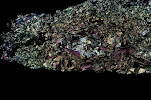I spent this week taking a short course on Successful Scientific Writing: from Proposal to Publication taught by Dr. Sarah Shephard at the Center for Teaching and Learning at ETH Zürich. The course provided such a wealth of useful information I’ll try to do several posts about the things I’ve learned. Today’s post will be all from memory, as I left the notebook full of handouts at home when I came into the office this morning.
Today’s topic is reading. Reading is something at which I’ve always excelled—I can’t remember the time before I was able to read, and I’ve always been one to “fall into” books, getting totally immersed in the story and not noticing time elapsing in the real world. Unfortunately, reading articles in scientific journals does not have that same effect. Narrative stories are designed to flow smoothly and to engage the audience, but most science writing is designed to communicate results of a project and discuss the implications thereof. We read journal articles with the goal of learning, not entertainment (though, in some fortunate cases both are possible), and she recommends a very different approach to reading science literature than is taken when reading a novel.
She suggests first reading the literature when you are in the “deciding upon a project to do” stage—find out what is the state of the art on the topic(s) of interest, not only what is currently known, but how those facts have been interpreted thus far, and if there is more than one “school of thought” on the topic. Which author(s) do you agree or disagree with, and why? Keep these questions in mind when doing the initial reading of the literature.
When you sit down to read a new article, first glance over the entire article—make a note of the structure of the article—how much of it is devoted to the introduction, the methods used, the results, and the discussion/conclusions? What headings did they use for the various sections? What figures and tables were used to illustrate their points or provide supplementary data? Once you are comfortable with what information is going to be presented think of specific questions you expect to be answered in the article, and make a note of them. Now you are ready to begin the reading process.
The reading itself should be punctuated by writing on the part of the reader. Read one paragraph, and then jot down notes to yourself about what it said. Paraphrase their point in your own words—this is an important component of learning the subject matter—by taking an active role in the process and writing it down, you will better remember what it said. After you have paraphrased the paragraph ask yourself the following questions: Did it provide the answers to any of the questions on your list? Did it make you think of other questions you wish to find answers to within the course of the article? After you have completed all of these tasks read the next paragraph and repeat the process of writing a paraphrased summary and determining if it has answered any of your questions or posed new questions. Once you’ve done this process for a number of paragraphs (five is a good number, but there may be reasons within the structure of the article you are reading to include more or fewer) go back and look over all five paragraphs and your notes thereon and determine what combined information they relate—write down your own summary of the whole section. Ask yourself if this section answers any of the questions you have. Do you agree or disagree with what has been said thus far and why? Does this section of the paper agree or disagree with other papers you have read? Repeat this process through the entire paper, and at the end condense it all into a brief summary of what you feel the key points are relevant to the topic you are currently studying.
She cautions that this process takes longer than simply reading each word on the page in order one time through. However, she also insists that it is worth the extra effort on your part because these techniques greatly enhance one’s ability to understand and remember what one has just read. She also says that not only should one read everything one can find that is relevant to the topic at the start of the project before doing the new research, one should also go back and review all of those papers (and any new ones published subsequently) after obtaining one’s results and before actually writing the paper to publish the results. That second reading should go much faster, as you will have your old notes on the paper to look at, in addition to the paper itself. However, having done the research you may find that you now have different questions or feel that different aspects of each paper is now more important than the parts you had initially recorded.
Because this reading method is more intensive than simply “falling into a good book” she recommends that it be done in small segments—read for 10 minutes at a time, then take a short break. Someone who is experienced in this technique might be able to read (and do the writing/thinking about what has been read) for 30 minutes at a time before needing a break. However, remember to make the break short and return to the process!
Bandweaving Workshop in February!
3 days ago




1 comment:
Intresting post, good read looking forward to more on the subject.
Post a Comment